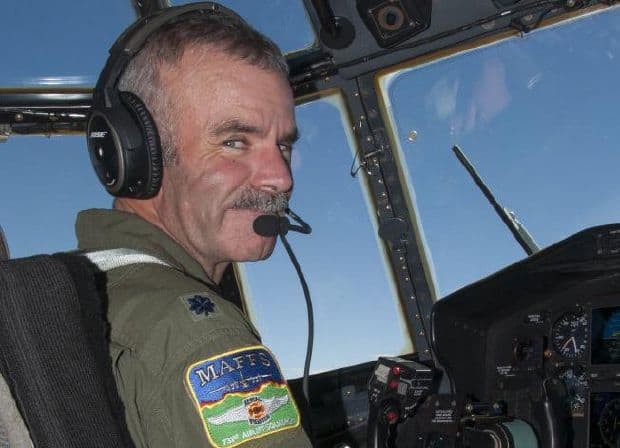
We’ve heard from a number of folks on suppression tactics and the use of fire retardant. Here’s another voice.. from a pilot, Lt. Col. Luke Thompson, from an article on his retirement here in the Colorado Springs Gazette).
He learned about fire in Covelo, too. After his freshman year at San Jose State, he went to the fire station off Highway 162 between Keith’s Market and the Hidden Oaks Gift Shop and signed on for a summer battling wildland blazes across Northern California.
“It can definitely be the hardest work in the world,” he said.
“I don’t know anything more grueling.”
After one sweaty summer on a fire engine crew and cutting fire lines by hand with a hoelike tool called a Pulaski, Thompson knew there had to be a better way. It’s a realization that he still finds striking as one of the military’s most experienced aerial firefighters.
“I know how much work it is to carve 100 yards of fire line, which we pass over in a fraction of a second,” Thompson said.
and
He’s more animated when he talks about the 302nd’s most challenging mission: using the C-130 to drop as much as 28,000 pounds of retardant to check the progress of wildfires.
It’s something Thompson has done more than 100 times.
“That’s not that many,” he says.
It is something he loves.
“It’s rewarding,” he said. “It is in the public eye.”
He’s fought fire in every Western state. It’s a mission that takes the C-130 right to the edge of its capabilities: flying a plane with a heavy load at low speed and low altitude through air roiled by rising heat from wind-whipped flames.
Thompson said it’s not that scary.
“You focus on the job,” he said.
He’s flown against fires high in the wildlands and in Colorado Springs.
He’s legendary for keeping his cool while flying, but he’s not completely unemotional when fires rage.
“The hardest for me is when they are ripping through houses,” Thompson said.
Flying against fire is work that requires a gentle touch at the controls and a keen eye.
“You can see when you are coming up on a fire how aggressive it is,” he said. “It can be very daunting.”
The whole C-130 crew acts as one machine during the drops.
The pilot must fly a perfect course, the crew chief must keep the four turbines in harmony.
The crew in back must release the load of orange fire-stopping stuff right on time.
Fighting blazes on slopes is the toughest.
“Our challenge is keeping it slow enough,” he said.
Thompson says a firefighting flight is something that draws on everything he’s learned.
He remembers when the wing was called to battle close to home in 2012 and 2013 as the Waldo Canyon and Black Forest fires sent clouds of sooty smoke across the Pikes Peak region.
“When its in view of the base, there’s motivation,” he said.